Home
Broadcom’s Breakthrough CPO Architecture for Scale-Up and Scale-Out AI Networking - Virtual Webcast
Broadcom’s Breakthrough CPO Architecture for Scale-Up and Scale-Out AI Networking - Virtual Webcast
Manish Mehta, VP of Marketing and Operations at Broadcom, discusses the launch and impact of the Tomahawk 6-Davisson CPO Ethernet switch, highlighting industry-first bandwidth and efficiency advances for next-generation AI networking.
What does Broadcom's new switch (Tomahawk 6-Davisson) mean for the future of high-bandwidth, energy-efficient AI networking?
Host Patrick Moorhead, Founder, CEO, and Chief Analyst at Moor Insights & Strategy, is joined by Broadcom's Manish Mehta, VP of Marketing & Operations, Optical Systems Division, for a conversation on Broadcom’s latest breakthrough in Co-Packaged Optics (CPO) Ethernet switches. The discussion focuses on the launch of Tomahawk® 6 – Davisson (TH6-Davisson), the third-generation CPO Ethernet switch designed for the rigorous demands of AI networking, delivering the first-ever 102.4 Terabits per second of optically enabled switching capacity.
Key Takeaways Include:
🔹Groundbreaking bandwidth and efficiency: The TH6-Davisson delivers 102.4 Tbps bandwidth, doubling the capacity of any current CPO switch, while significantly reducing power consumption and improving network stability.
🔹Industry-first integration and performance: The platform directly integrates optical engines with the switch package, offering a 70% reduction in optical interconnect power usage and higher model FLOPs utilization for demanding AI and cloud clusters.
🔹Broadcom’s evolving CPO approach: Designed for seamless interoperability, TH6-Davisson connects with DR-based and NPO/CPO optical interconnects at 200 Gbps per channel, supporting frictionless connectivity for advanced NICs, XPUs, and fabric switches.
🔹Generational advancement and future roadmap: Building on a foundation of innovation across three generations, Broadcom is progressing to a fourth-generation solution targeting 400 Gbps per-channel bandwidth, enhanced efficiency, and sustainability for hyperscale data centers.
Learn more at Broadcom.
Watch the full video at sixfivemedia.com, and be sure to subscribe to our YouTube channel, so you never miss an episode.
Or listen to the audio here:
Disclaimer: Six Five Media is for information and entertainment purposes only. Over the course of this webcast, we may talk about companies that are publicly traded, and we may even reference that fact and their equity share price, but please do not take anything that we say as a recommendation about what you should do with your investment dollars. We are not investment advisors, and we ask that you do not treat us as such.
Patrick Moorhead: Welcome back to the Six Five Podcast. And we are talking about our favorite topic that it seems like we've been talking about for the last two and a half years, and that is about AI. I mean, it's transforming industries and the ecosystem build out is absolutely amazing and I'm super excited about it. I was invited two and a half years ago to Redmond to actually sit and listen to Saty Nadella and this guy named Sam Altman talk about this thing called generative AI. And I was in the audience with about 100 other people who knew it would get us here. And it's pretty awesome. I like to talk about the four horsemen of data center AI and CPU. GPUs in particular. And Xpus get a lot of, a lot of camera time, storage, memory, cpu. But the one thing that pulls it all together is networking. Right. And that's something that I think more people are finding in the data center world. They know this is important, but more people are seeing the importance of that out there. And I'm pleased to have Manish Mehta from Broadcom to talk about one of the most exciting new types of technologies out there, CO packaged optics, or cpo. How are you doing, Manish?
Manish Mehta: Doing well. Nice to be with you today.
Patrick Moorhead: Oh man, you, you have been on an absolute ride here. Broadcom, the entire company. You've been obviously super busy and in what you're doing. And you know, it's funny, I remember CO package optics being a glimmer in the eye of the industry. Okay. It's like, okay, Sunday, we're going to get here. This theory is great. We've got research here, but here we are. You are launching a product here. And what I've known to understand and love about Broadcom is you don't launch things until they're ready. So, hey, tell us more about what you're launching today.
Manish Mehta: Yeah, so we are launching our third generation CO packaged optics product. It's called Tomahawk 6 Davison. It is a 100T Ethernet switch that is going to be co packaged with optical engines to where all of the bandwidth from that package escapes optically, enabling connectivity to other switches or NICs connected to XPUs or GPUs for building effectively very, very large AI clusters. I think, as is becoming quite apparent to everyone who's involved in the AI space, these AI computers consist of so many GPUs or XPUs and when you require that kind of reach, you have to connect them optically. And we're very excited to be launching this product which can really improve the power consumption, the energy efficiency and the performance of optical links that are necessary for really, really large AI clusters.
Patrick Moorhead: Yeah, what CPO can do inside of a rack and then inside of connecting racks is amazing. The ability to, it's funny now just when you think power budgets have, have stayed the same, you know we're, we're, we're seeing specifications that are actually doubling. Right. I'm seeing you know, 2.5 gigawatts out there and then anything that can be done to reduce power inside to jam in at as many of these high power accelerators and, and GPUs as is A. No, it is. I don't want to call it a no brainer because nothing is, but it's what the market wants.
Manish Mehta: Yeah, you hit it on the head. So optical interconnects which actually consume far more power than electrical interconnects and with every generation of a switch or GPU or XPU, the bandwidth requirement is going up, the desire to increase the number of devices connected to each other is going up. And this is really, really straining the power budgets at the rack level and at the site level. We launched our initial activity in co packaged optics actually before AI was the application. Back then we saw the power problem but we knew that over several generations that was going to continue to get worse. And you had to innovate, you had to bring all of these components closer together on the package to minimize how much power was going to be consumed. And you know, as we were maybe somewhat fortunate that AI then took off and the value of this technology has really skyrocketed in the last few years.
Patrick Moorhead: Listen, one person's luck is another person's vision, okay? But one thing we've seen in the industry is the ever present demand for this compute today. But you had to make these bets years ago in order in order to get there. And it's amazing that this is actually reality. You know I remember sitting through a lot of industry shows and talks about the future of co package optics and oh my gosh, it's hard. It's never going to happen. I mean heck, we were debating Deb creating optical right versus copper for certain and we still are for certain implementations. But, but, but, but here we are. Hey, I saw the use of industry first, okay. And you know as an analyst and a kind of an insider, you know my ears perk up. I do like when companies come out and we'll say we're doing this first but, what is it that's industry first about what you're announcing here.
Manish Mehta: Yeah. So Tomahawk 6 Davison is the first 100T Ethernet switch that is co packaged with optics. Absolute first in the industry. Taking the foundation of Broadcom's networking and AI technologies. Three founding principles, open, scalable and power efficient. Of course, that Ethernet platform is meant to be an open platform. So by building and first being the first to release this 100T Ethernet CO package switch, we're enabling the industry to adopt co packaged optics with the next generation of switching in a very open and interoperable format that will enable these devices to talk to other devices based on the same ethernet industry standards.
Patrick Moorhead: No, that's good. And you know, there's different ways to, to accomplish, you know, what you're trying to accomplish out there. There's a lot of different, you know, there's some competing standards, there's some, you know, very well known proprietary technologies that might start with an N that you know, are trying to accomplish the same thing. And I'm curious, what are the benefits of the way that you're, you're attacking the problem.
Manish Mehta: Yeah, so we, you know, we designed these switches to optically interoperate with any other device that's operating with 200 gig PAM4 IEEE compliance.
Patrick Moorhead: Yeah.
Manish Mehta: So that means that this switch can interoperate with another Ethernet switch that is compliant to that IEEE optical specification. It can interoperate with NIC cards at the server level that are, you know, enable the connectivity from the XPUs and GPUs for scale out networking. So that, that foundation of saying, you know, that hey, we need to really integrate the optics onto the switch package in order to reduce the power and we believe improve reliability and link stability for user experience. But we want to ensure that the devices we build are going to interoperate with other critical devices that are released by peers and partners in the industry, which I think was a really important foundation of where we began. You couple the actual Ethernet switch with a IEEE compliance standards based optical interface and now you have something that can very more easily scale than, you know, very easily scale. Just like historical Ethernet platforms have.
Patrick Moorhead: Yeah. So I interact a lot with hyperscalers and a lot of things that you're outlining make sense to me. So Broadcast doesn't get a lot of credit for what it's done in, in, in cpo. I think, you know, one of the elements is that you typically don't talk a lot about technologies until, until they're productized. But you know, I visited you for an AI day a while, a while back and I saw stuff, I touched stuff. It was there. This isn't your first rodeo on this. I think it might help. Maybe a question I have for you. Maybe talk a little about the history of developing CPO technology at the company. Yeah.
Manish Mehta: So you're right. This is our third generation CPO product that we're announcing. We made our first announcement for development of co packaged optics almost exactly five years ago. I think it was around January 2020 that we announced in industry that we're making this investment and had a first generation product which allowed us to really build. It was based on a 25T Ethernet switch and it allowed us to really build a platform, design platform, a manufacturing platform and start to partner and enable a co packaged optics ecosystem with critical industry partners. These are foundry partners and OSATs doing advanced packaging companies making all the fiber cabling that's required in these boxes that now are extracting all of the bandwidth through light rather than electrically. You're right. You know, you've mentioned that people have been talking about co packaged optics for a long time, a little over two decades. But we made an effort too early in our investment to bring together the ecosystem to actually deliver a full system product. And we were able to achieve that at a very small scale in our first generation device that was called Tomahawk 4 Humboldt. Then we had our second generation product, Tomahawk 5 Bailey. And I think the AI day you're referencing is where we had that on display. That was our 51-treamit co package ethernet switch. We called it Tomahawk 5 Bailey. That really allowed us to take the next step in volume and scale on co packaged optics and get a larger number of customers a lot more familiar with the technology, expand the partner ecosystem and the supply chain. So now we're very comfortable as we go into this third generation product that we've established a really strong foundation of technology partners, technical platform and you know can continue to expand the value of co packaged optics to our end customers.
Patrick Moorhead: That's good. I probably shouldn't ask you at the beginning of the show but, what does the availability look like?
Manish Mehta: Yeah, so we're, you know we're taking orders now for these devices, pretty excited to get them into the hands of customers. You know we expect it, in 2026 it's going to be a year of testing and qualification which is pretty natural for sort of a leading edge technology and excited about where we go from there. For, on a large scale.
Patrick Moorhead: Yeah. So I mean obviously you have a roadmap and you know, you, you probably have multiple generations that you're, you're looking at right now beyond, beyond Slideware. And I'm curious, what are some of the things that you are looking for on your road? I'm not asking you obviously to disclose your roadmap, but maybe talk a little bit. Just say what you can about your CPO roadmap.
Manish Mehta: Sure. So our first two generations, the Humboldt and Bailey generations, both operated at 100 gig per lane. And our third generation Davison is doubling the per lane bandwidth. So it's operating at 200 gig per lane. It doubles the overall bandwidth versus the prior generation, the TomaHawk 551T device. But we actually announced a few months ago that we're already in development on our fourth generation cpo. It's going to be again doubling the bandwidth per lane. So we'll be moving to 400 gigs per channel. And that next phase is while evolving. We're really excited about some of the steps we're taking in improving signal integrity, improving advanced packaging to take the next step in ensuring line bandwidth density and in power efficiency. So, you know, I think we've got the team obviously really focused on scaling the Gen 2 and the Gen 3 platforms, but also putting their heads down and working hard to make sure that 400 gig Perlane CPO can be available to the market as the core ASICs that require them, whether they're switches or NICs or XPUs start to emerge that require that type of bandwidth.
Patrick Moorhead: If I look at the needs of the hyperscalers, they have changed. But some things that have remained consistent in heterogeneous environments are super important to them. And the ability to take certain pieces of technology and optimize it and make it, make it theirs is very consistent out there. And what I'm seeing so far from you is that you are delivering that possibility or the ability to be able to deliver that while hitting low latency and low power.
Manish Mehta: Yeah. So we at Broadcom are focused on building chips and then we work with a broad ecosystem of partners who can build systems for different customers and users. So we're really excited about what the partner ecosystem developing systems are going to be able to deliver different configurations, form factors, sizes. I think that's really exciting. But the commonality you're going to see across all of these, as you mentioned, lower power versus traditional optical interconnects, lower latency versus traditional optical interconnects, and our power is more than 70% lower than what's going to be delivered with a traditional 1.6 terabit pluggable optical module using a DSP. The other thing that we're really excited about is the improvement we've seen in the reliability and the link stability of an optical interconnect when it's delivered in a co packaged format versus kind of traditional pluggable transceivers. And I think this is something that maybe didn't matter as much in the days of standard cloud computing when there was a lot of redundancy in the network. But as we move to AI where you have these large training jobs and every link flap generates a checkpoint retry, reducing that link instability can really improve GPU and XPU utilization. And I think that's resonating quite a bit right now with our customers.
Patrick Moorhead: Yeah, and this was one of the, I would say, you know, pre market objections to this type of technology as a category which was reliability. And if something goes down, hey, with a transceiver, I just, you know, put a new one in there and call it a day. And I'm, I like the novel ways that, that, that you have attacked this, this challenger. So I'm anish. Big day. Appreciate congratulations on the announcement and I'm sure we'll, you know, we'll never hear the names of the customers that are actually using it, but I, but you know, I think we all kind of know who are the movers and the shakers out there, but I really appreciate you spending the time.
Manish Mehta: Excellent.
Patrick Moorhead: Yeah, thanks again. All right, this is Patrick and Manish talking here about cpo. Big launch by Broadcom. I love that things that, you know, have been in research for 10 years, 20 years become literally a productized reality and that's not the same for all technologies. About. There have been a lot of really good research studies that never actually got productized. But here we are with CPO solving those power issues, the bandwidth issues and then the added reliability with these, these newer types of designs. Hit that subscribe button. Check out all of the hyperscaler data center networking tech discussions that we've had here on the Six Five as well as those we've had with Broadcom. Hit that subscribe button. Take care.
MORE VIDEOS
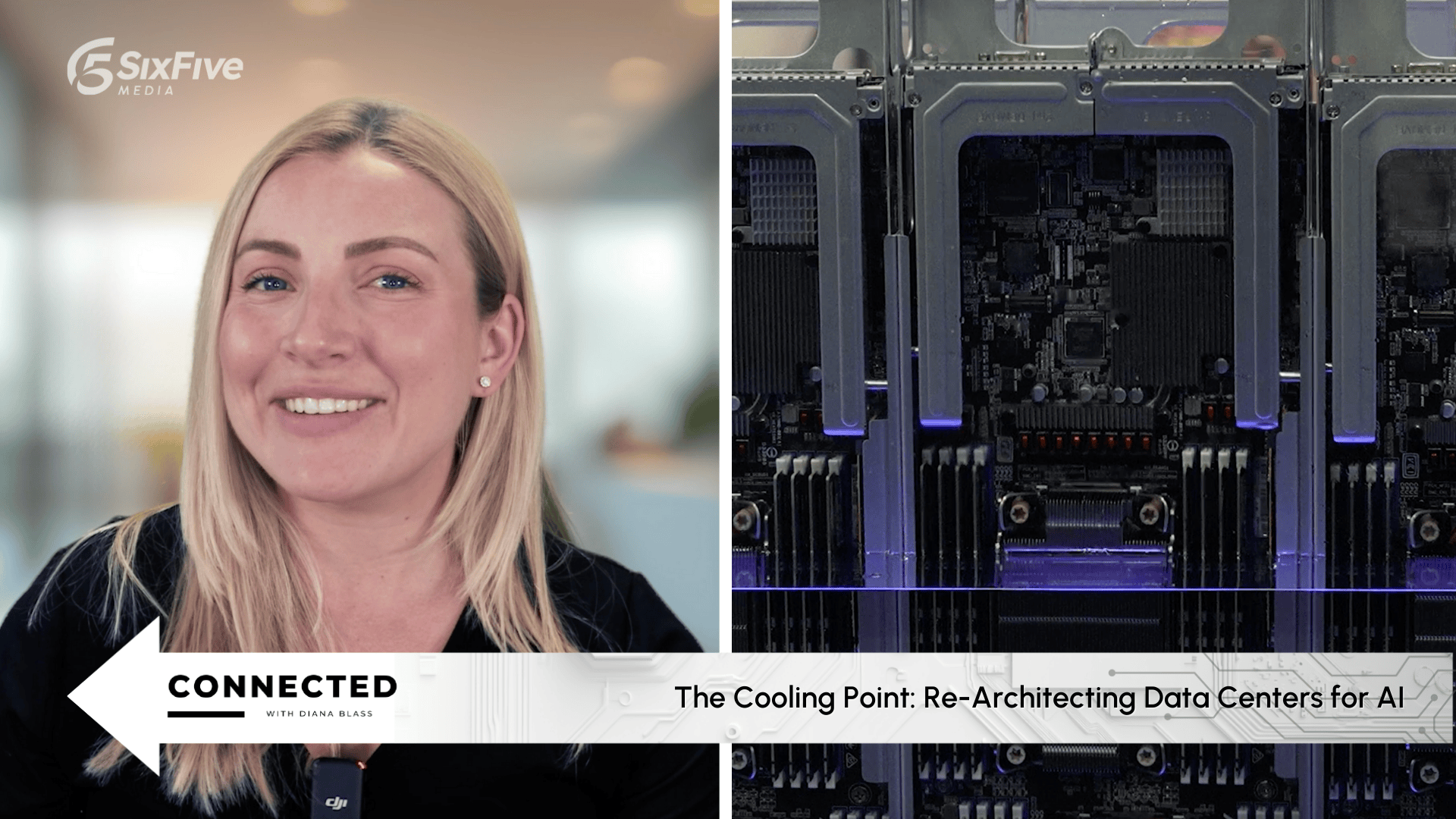
The Cooling Point: Re-Architecting Data Centers for AI - Six Five Connected with Diana Blass
Avi Shetty, Hecheng Han, Dr. George Zhang, Neil Edmunds, John Griffith, Josh Grossman, and Francesca Cain-Watson join Diana Blass to discuss the evolution of liquid cooling in AI systems, exploring design tradeoffs, architectures, and deployment strategies.

The Six Five Pod | Ep. 288: OpenAI’s Valuation Debate, Marvell’s Network Bets, and the Next Bottlenecks for AI Growth
This week, Patrick Moorhead and Daniel Newman unpack why today’s AI moment feels less like the endgame and more like Netflix’s DVD-by-mail phase—the very beginning of a transformation that will redefine the tech industry. They dig into soaring AI valuations and the growing debate over whether today’s leaders signal durable platforms or bubble dynamics, then shift to what really matters under the hood—AI infrastructure, with a sharp focus on networking and memory, informed by insights from Marvell’s Industry Analyst Day. This episode also breaks down recent market moves across major tech players, before closing with a forward-looking take on where AI is headed and what it will take to stay competitive as the pace of change continues to accelerate.
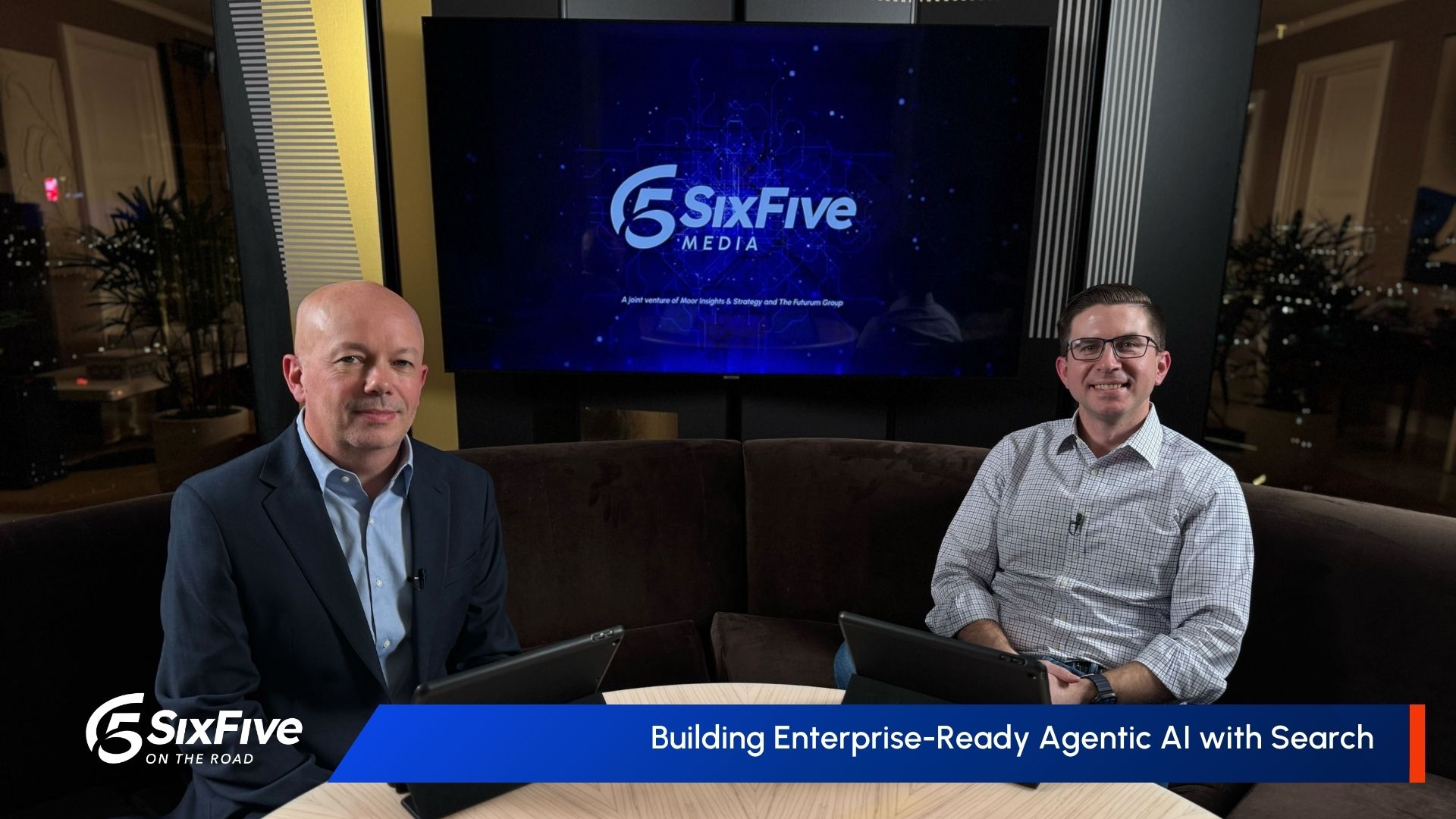
Building Enterprise-Ready Agentic AI with Search - Six Five On The Road
Steve Kearns, GM of Search Solutions at Elastic, joins Nick Patience to share how Elastic is enabling enterprises to move from RAG to agentic AI, solving operational challenges, and powering the next generation of autonomous workflows.
Other Categories
CYBERSECURITY
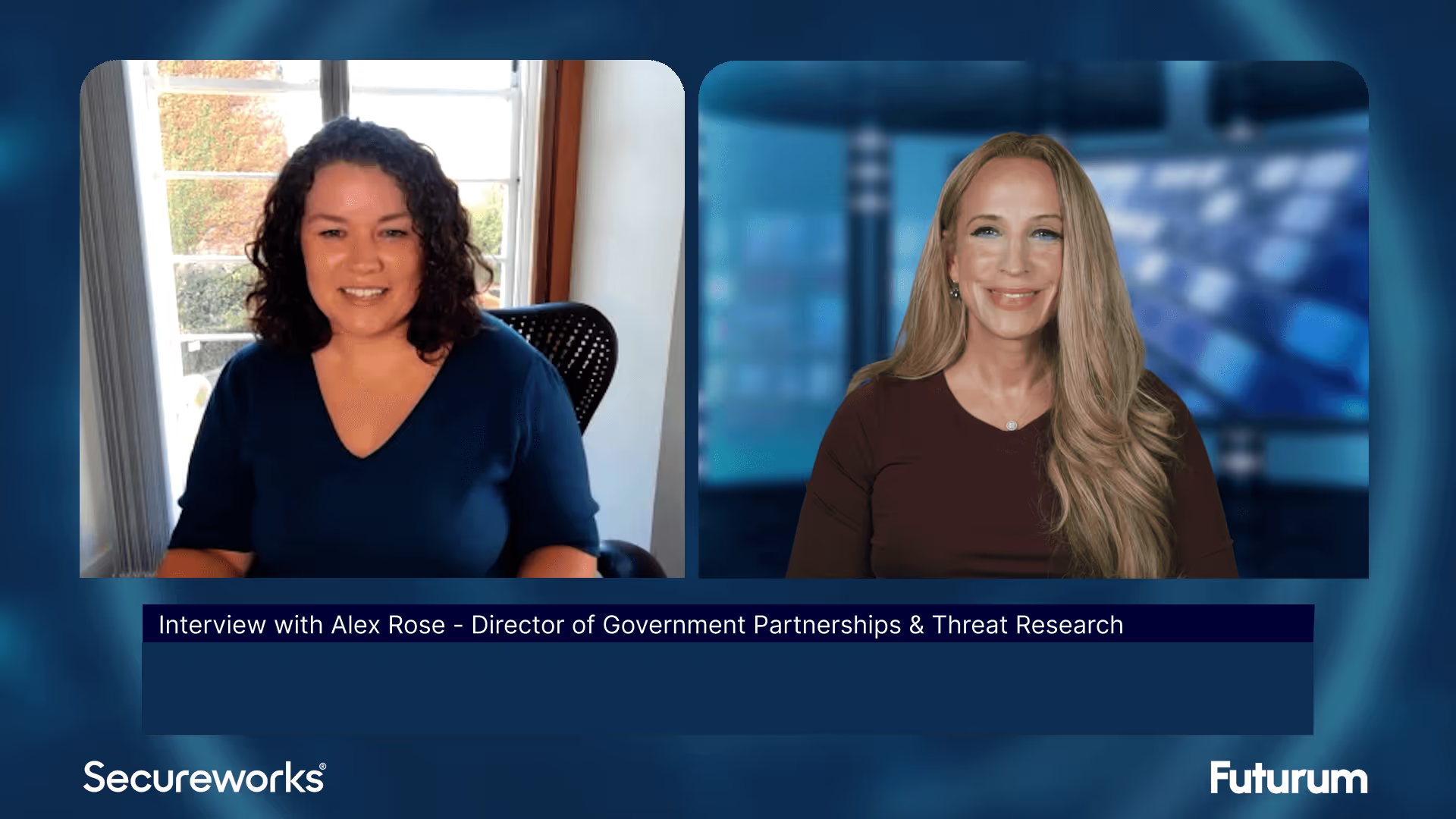
Threat Intelligence: Insights on Cybersecurity from Secureworks
Alex Rose from Secureworks joins Shira Rubinoff on the Cybersphere to share his insights on the critical role of threat intelligence in modern cybersecurity efforts, underscoring the importance of proactive, intelligence-driven defense mechanisms.
QUANTUM
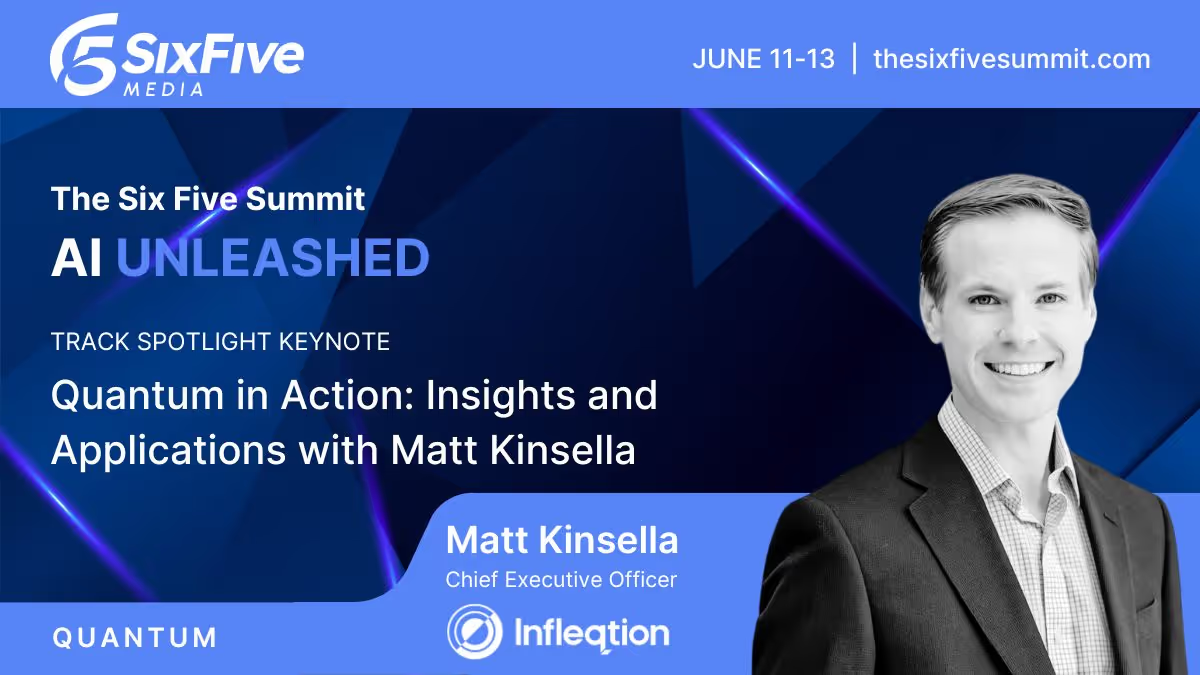
Quantum in Action: Insights and Applications with Matt Kinsella
Quantum is no longer a technology of the future; the quantum opportunity is here now. During this keynote conversation, Infleqtion CEO, Matt Kinsella will explore the latest quantum developments and how organizations can best leverage quantum to their advantage.
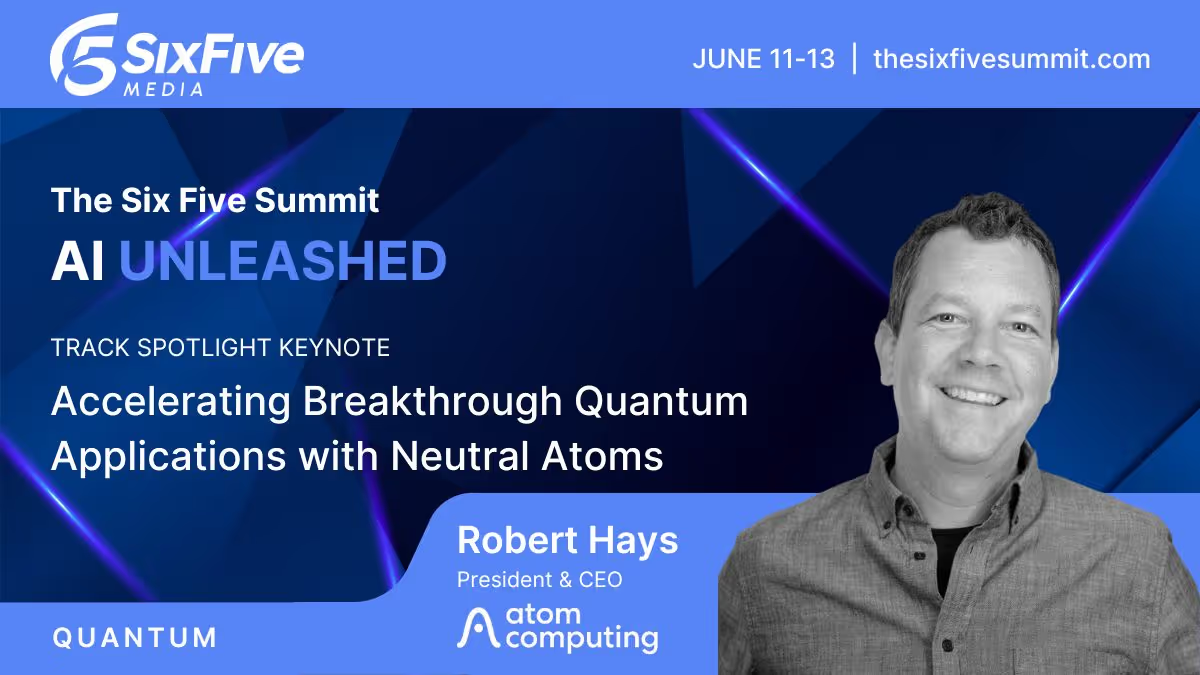
Accelerating Breakthrough Quantum Applications with Neutral Atoms
Our planet needs major breakthroughs for a more sustainable future and quantum computing promises to provide a path to new solutions in a variety of industry segments. This talk will explore what it takes for quantum computers to be able to solve these significant computational challenges, and will show that the timeline to addressing valuable applications may be sooner than previously thought.




